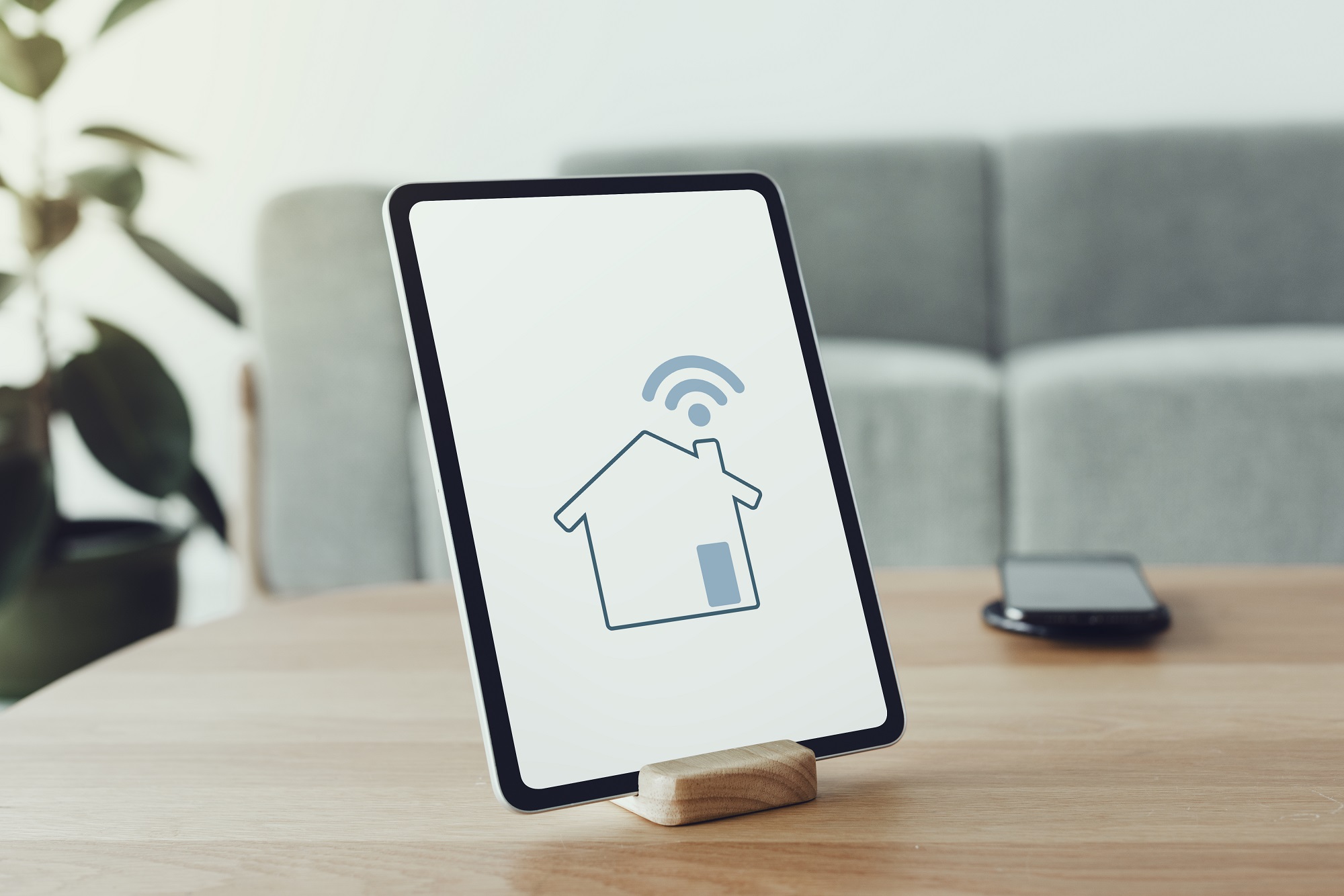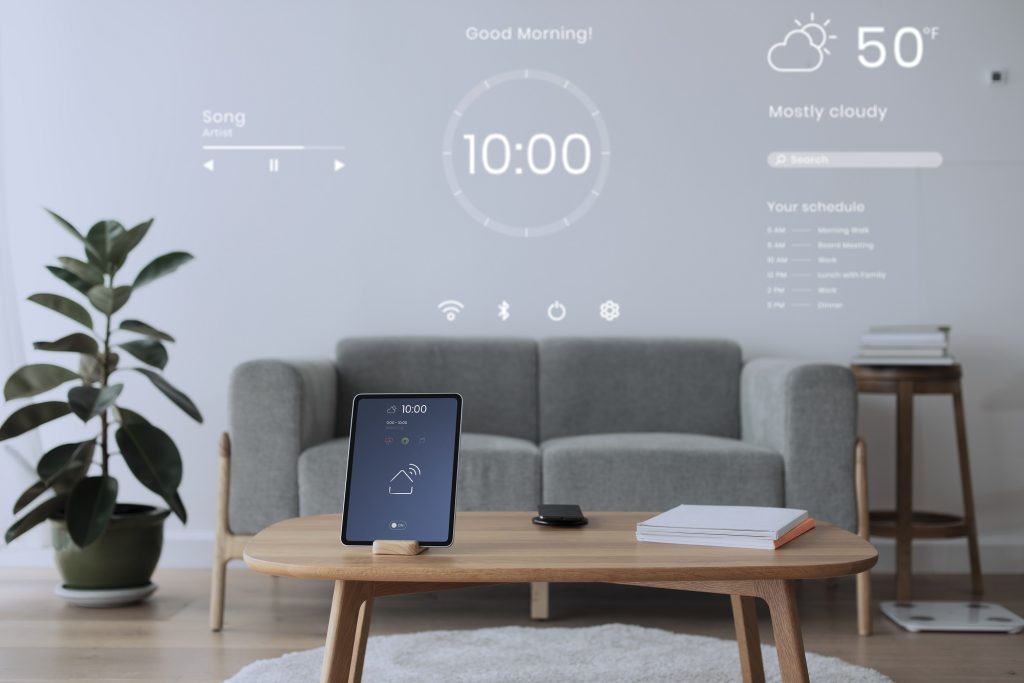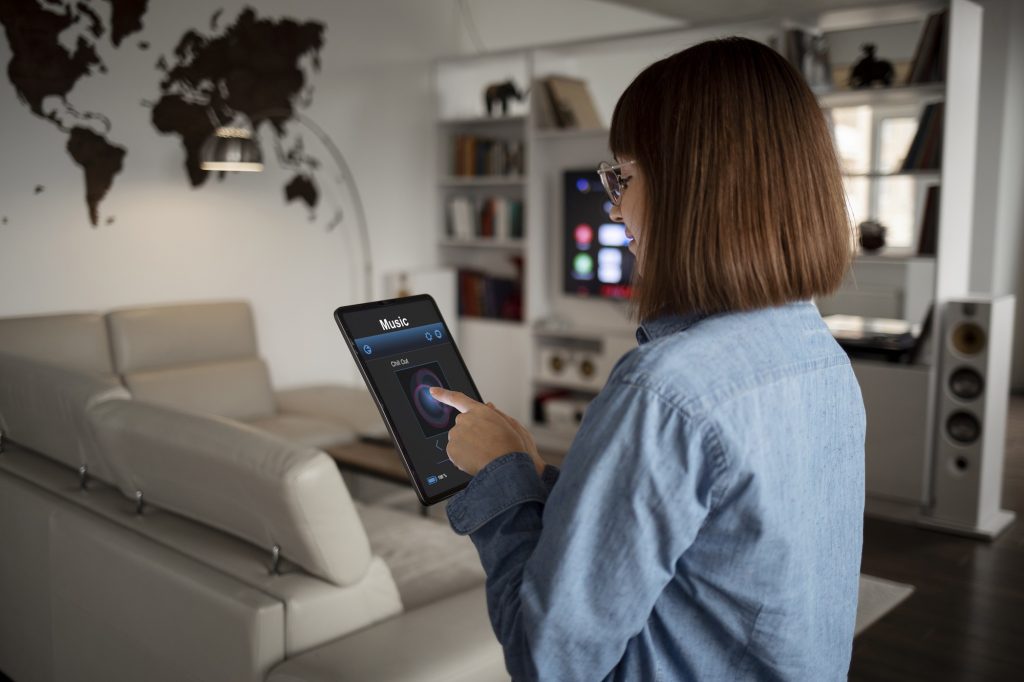
The Rise of Smart Homes
In an era dominated by technological advancements, the concept of a smart home has transitioned from a futuristic fantasy to a tangible reality. The integration of cutting-edge technology into residential spaces is reshaping the way we live, offering unparalleled convenience, security, and energy efficiency.
The Basics of Smart Homes
At its essence, a smart home is a living space that has been transformed through the incorporation of interconnected devices, all designed to communicate with one another. These devices work collaboratively to elevate and enrich the overall living experience for inhabitants. In the modern landscape of smart homes, various technologies serve as the building blocks for this interconnected ecosystem, offering functionalities that range from climate control and security monitoring to lighting automation and virtual assistance.
1. Smart Thermostats:
One cornerstone of smart homes is the advent of smart thermostats. These devices revolutionize how individuals manage the climate within their homes. By allowing homeowners to remotely control the heating, ventilation, and air conditioning (HVAC) systems, smart thermostats bring a level of convenience and energy efficiency that was previously unparalleled. They often incorporate learning algorithms, adapting to occupants’ preferences and schedules over time.

2. Security Systems:
Smart security systems have redefined the concept of home protection. Incorporating features such as facial recognition, motion detection, and real-time monitoring accessible through smartphone applications, these systems provide homeowners with an advanced level of control and awareness. The integration of smart locks, cameras, and sensors ensures a comprehensive and responsive approach to home security.
3. Automated Lighting:
Automated lighting systems add both practicality and ambiance to smart homes. Homeowners can program lights to adjust based on specific schedules or triggered events, enhancing energy efficiency. Moreover, the ability to control lighting remotely via smartphone apps contributes to a more secure and customizable living environment.
4. Virtual Assistants:
The emergence of virtual assistants, like Amazon Alexa, Google Assistant, and Apple’s Siri, has become a central aspect of smart homes. These voice-activated interfaces serve as the communication hub, allowing users to interact with and control various smart devices using simple verbal commands. This hands-free approach not only adds an element of convenience but also contributes to the seamless integration of diverse technologies.
Key Components of a Smart Home
Smart Security Systems: Gone are the days of traditional locks and basic security measures. Smart security systems now incorporate advanced features like facial recognition, motion detection, and remote monitoring. Homeowners can keep a vigilant eye on their property through smartphone apps, receiving real-time updates and alerts.
Smart Thermostats and Climate Control: Smart thermostats have revolutionized energy management by allowing homeowners to remotely control their home’s climate. Learning algorithms adapt to daily routines, optimizing energy consumption and ensuring a comfortable environment upon arrival.
Home Automation Systems: The rise of voice-activated virtual assistants such as Amazon Alexa and Google Assistant has paved the way for seamless home automation. Users can effortlessly control various smart devices, from lights and thermostats to locks and entertainment systems, using simple voice commands.
Smart Lighting and Energy Efficiency
Smart lighting systems represent a significant leap forward in both energy efficiency and the customization of ambiance within homes. These systems utilize advanced technologies to offer homeowners greater control over their lighting, resulting in a more sustainable and personalized living environment.

1. Automated Lighting Schedules:
Smart lighting systems enable users to program lights based on their daily routines. By establishing automated schedules, lights can adjust their brightness and color temperature throughout the day. For example, lights can mimic the natural progression of sunlight, gradually brightening in the morning and dimming in the evening. This not only enhances the overall atmosphere but also contributes to a more energy-efficient use of lighting resources.
2. Occupancy Sensing and Adaptive Lighting:
Smart lighting often incorporates occupancy sensors, detecting when rooms are occupied or vacant. When combined with automation, lights can adjust in real-time based on occupancy, turning on when someone enters a room and off when the room is empty. This not only eliminates the need for occupants to manually control lighting but also ensures that lights are only in use when necessary, minimizing energy consumption.
3. Remote Control and Monitoring:
The ability to control lights remotely through smartphone apps or voice commands adds a layer of convenience and energy efficiency. Homeowners can easily check and control the status of lights when away from home, ensuring that lights are turned off in unoccupied rooms. This feature helps prevent energy wastage and contributes to cost savings on electricity bills.
4. Customizable Lighting Scenes:
Smart lighting systems allow users to create and save customized lighting scenes for different activities or moods. Whether it’s a bright and focused setting for work, a warm and cozy ambiance for relaxation, or a vibrant atmosphere for entertaining guests, homeowners can effortlessly adjust the lighting to suit their preferences. This not only enhances the overall living experience but also promotes energy-efficient use of lighting based on specific needs.
5. Integration with Other Smart Devices:
Smart lighting systems often integrate with other smart devices in the home. For instance, lights can sync with the smart thermostat to coordinate lighting and climate control for optimal energy efficiency. This level of coordination ensures a holistic approach to energy management within the smart home ecosystem.
The Role of AI and Machine Learning
Artificial Intelligence (AI) plays a pivotal role in enhancing the capabilities of smart homes. Machine learning algorithms analyze user behavior and preferences, allowing devices to adapt and anticipate needs over time. This level of personalization adds an extra layer of sophistication to the smart home experience.
Overcoming Challenges and Concerns
While the benefits of smart homes are undeniable, concerns about privacy and security linger. Manufacturers continually address these issues, implementing robust encryption and security protocols. Homeowners can mitigate risks by regularly updating firmware and using strong, unique passwords for their devices.
The Future of Smart Homes
As technology evolves, so does the landscape of smart homes. The future promises even more integration, with emerging technologies like augmented reality and the Internet of Things (IoT) likely to play a prominent role. The smart home of tomorrow holds the potential to further streamline daily tasks, enhance energy efficiency, and provide an unprecedented level of customization.
In conclusion, the rise of smart homes signifies a paradigm shift in residential living. By seamlessly integrating technology into our properties, we are not only making our lives more convenient but also contributing to a more efficient and sustainable future. As the smart home revolution continues, homeowners have the exciting opportunity to embrace and shape the connected dwellings of tomorrow.